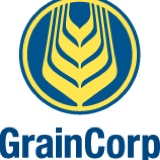Information
-
Conducted on
-
Location
-
Prepared by
-
Other Personnel
-
Document No.
-
Rail Siding Owner
- ARTC.
- JHR CRN.
- V/Line.
- Aurizon.
- Queensland Rail.
- GrainCorp.
- Other.
-
Safety Arrangements - has a toolbox talk, task risk assessment and appropriate protection arrangements been instigated prior to this audit/observation.
Section 1 - Rail Infrastructure and Certification.
1.1 Inspection Type.
-
Detailed or Visual Inspection. <br><br>Detailed inspections will require additional reports to be included.
-
Is siding currently certified?
1.2 Geometry.
-
Geometry Standards - CETS.
For NG = 1067mm.
Wide Gauge - =<20mm (N), 21-28 (P2/A4), 29-31 (E2), >31mm (E1).
Tight Gauge - <15mm (N), 16-17 (P2/A4), 18-19 (E2), >19mm (E1).
Short Twist - <19mm (N), 19-22 (P2/A4), 23-25 (E2), >24mm (E1).
Long Twist - =<25mm (N), 25-30 (P2/A4), 30-33 (E2), >33mm (E1).
Geometry Standards - ARTC CoP ETW-00-01.
For SG = 1435mm, BG = 1600mm.
Wide Gauge - =<28 mm (N), 29-34 (P2/A4), 35-38 mm (E2), >38 mm (E1).
Tight Gauge - <16mm (N), 17/18 (P2), 19/20 (E2), >20mm (E1).
Short Twist - <20mm (N), 21/22 (P2), 23-25 (E2), >25mm (E1).
Long Twist - =<55mm (N), 56-64 (P2), 65-74 (E2), >74mm (E1). -
Gauge.
-
Top.
-
Line.
1.3 Clearances.
-
Track Centre.
-
Structure Clearances.
1.4 Ballast.
-
Profile.
-
Condition.
1.5 Sleepers and Fastenings.
-
Are sleepers visible.
-
Sleeper condition.
-
Fastenings.
-
Backcanting.
1.6 Rail.
-
Rail wear corrosion.
-
Joint condition.
1.7 Drainage.
-
Drainage condition.
1.8 Buffer Stops, Stop Blocks and Baulks.
-
Condition.
1.9 Walkways.
-
Walkway condition.
1.10 Right of way.
-
General condition.
-
Fencing.
-
Vegetation.
-
Railway signs condition and security.
1.11 Silo Infrastructure.
-
Silo spout locking. Are all spouts locked and outside structure gauge?
-
Silo platform access, are all ladders locked?
-
Walkway, platforms and stairs, STF hazards.
1.12 Electrical and Yard Lighting.
-
Yard lighting.
-
Power poles and overhead cables.
-
Cables, yard troughs, track circuits.
1.13 Road/Rail Interfaces.
-
Level Crossing Surfaces.
-
Level Crossing Signage.
-
Road Rail Demarcation.
1.14 Connecting Infrastructure.
-
Connecting Infrastructure Owner.
- ARTC.
- JHR CRN.
- V/Line.
- Aurizon.
- Queensland Rail.
- GrainCorp.
- Other.
-
Is siding currently certified?
-
Frame, lever and steps.
-
Switch Blades.
-
Crossing.
-
Bearers and sleepers.
-
Are walkways fit for purpose?
-
Weed Control - is the connecting infrastructure free of weed growth?
1.15 Internal Turnout Inspection.
-
Turnout Identification.
Critical Measurements. (Main)
-
Gauge at Switch (1419-1463mm).
-
Point Opening (40-50mm).
-
Gauge at Heel Block (1419-1463mm).
-
Gauge at Crossing Nose (1425-1442mm).
-
Check Rail Effectiveness (1382-1400mm).
-
Check Rail Flangeway Width (39-50mm)
-
Check Rail Flangeway Depth (40->45mm).
Critical Measurements. (Siding).
-
Gauge at Switch (1419-1463mm).
-
Point Opening (40-50mm).
-
Gauge at Heel Block (1419-1463mm).
-
Gauge at Crossing Nose (1425-1442mm).
-
Check Rail Effectiveness (1382-1400mm).
-
Check Rail Flangeway Width (39-50mm)
-
Check Rail Flangeway Depth (40->45mm).
Turnout Geometry.
-
Gauge.
-
Top.
-
Line.
Switchblades.
-
Switchblade condition.
Crossing.
-
Crossing condition.
Point Lever.
-
Point lever operation.
Bearers and Fastenings.
-
Bearers.
-
Fastenings.
1.16 New Defects and Exceedences.
-
Add Defect.
Defect.
-
Enter details of defect.
-
Add photos.
-
Defect Priority.
- A1 (E1) Prior to next train.
- A2 (E2) Prior to next train.
- A3 (P1) 7 days.
- A4 (P2) 28 days.
- A5 (P3) 3 to 6 months.
- A6 (P4) Ongoing monitoring.
- A7 (Monitor) Routine Inspection.
-
What is required to remove the defect? (Resources, parts, equipment, labour, time, cost estimate).
-
Actions. Exceedence Number.
1.17 Certification.
-
Is the siding certified and fit for purpose?
-
Examiner Name and Signature.






